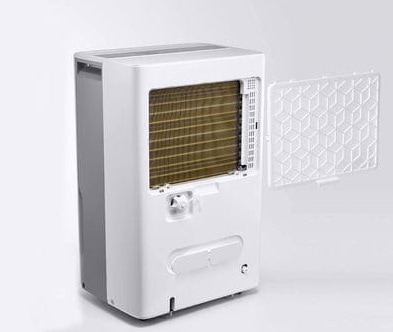Dehumidifiers are exceptional at reducing moisture in high humidity environments.
However, you may notice that your refrigerant or coolant unit isn’t producing cold, dry air or performing its work as well as it once was.
It could be that it needs to be recharged, and we’re going to explain how that’s done in this detailed article.
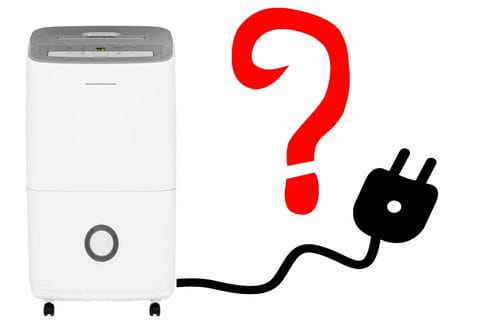
Photo credit: humidifiergeek.com
Can All Dehumidifiers Be Recharged?
You can’t recharge all dehumidifiers. Some of the older units might still have recharge kits, but today’s models have a wider variety of cooling and warming methods. For the most part, refrigerant and desiccant machines can be recharged.
Refrigerants have coolants on the inside, where the coils cool down the air to collect water from the moisture. Desiccant dehumidifiers contain a silica gel with color beads that indicate when charging is needed. If you don’t keep these units charged, they will cease to be effective.
When is it Time To Recharge My Dehumidifier?
After you’ve discovered if it’s possible to recharge your dehumidifier, you’ll need to know when it’s the right time. Charging it too often can lower its life expectancy, while some coolants produce chemicals in the air. Let’s have a look at how to tell when the magical moment has arrived.
Humidity Levels
Since the dehumidifier’s primary function is to reduce humidity, the first tell-tale sign for requiring recharge is when moisture levels rise back up. You can hear the machine running, but nothing’s happening to bring the dampness down.
While you should check that there’s no blockage and the fans are turning, the chances are that the charge is low.
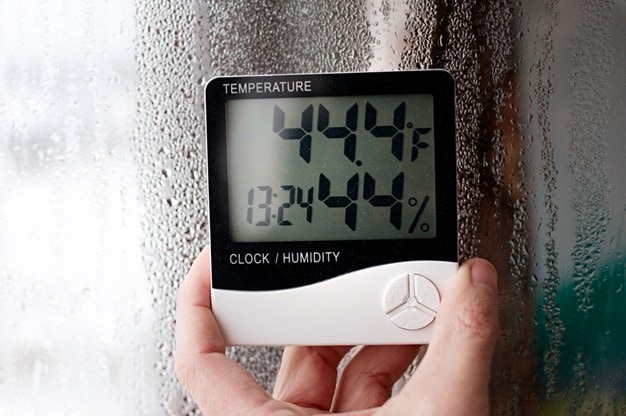


No Dry Air
Once the dehumidifier removes the moisture, what remains is dry air that blows out from the exhaust. You can quickly test if recharging is needed by feeling the air that’s leaving the machine. If there’s still too much moisture, it means that the coolant isn’t performing correctly.
No Condensing
When moisture is drawn from the air, the coils condense it enough to produce water in the bucket. If you hear the unit running, but there’s no liquid in the tray, that means that the air is passing straight through with no cooling. The coolant needs recharging.
Control Panel
Finally, the most obvious indication is on the control panel. There’s usually a light indicator or an icon that turns red when the coolant is out of charge.
Types of Coolant in Dehumidifiers
We’ve already mentioned two types of dehumidifiers that require charging, namely, refrigerants and desiccants. The former uses a coolant to condense the moisture into water. Here are the varieties you’ll find available.
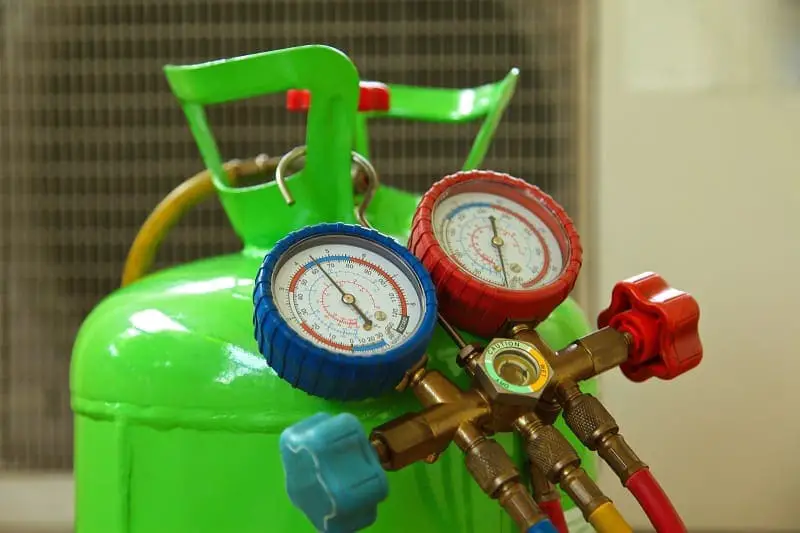


Photo credit: thedehumidifierexperts.com
Freon / R-22
If you have a dehumidifier that pre-dates 1995, you’ll probably have R-22 as the coolant. While manufacturers have phased it out over the decades, you’ll still find a few units that use it. Commercial retailers do sell them, but they’re rare.
Puron / R-410A
Puron is the replacement coolant for R-22, which is more environmentally friendly and energy-efficient.
The methane base requires more pressure, which is why you can’t use it in old dehumidifiers that require R-22. If you attempt to use the new coolant with an old device, you might blow the gasket.
Silica Gel
Silica gel is reserved for desiccant dehumidifiers. A containment unit holds the gel with an indicator panel in the front. When the beads change from orange to green, you need to plug the charger into a socket for about eight hours. The silica dries, giving it the additional capacity to absorb moisture.
How to Recharge a Dehumidifier
If you’d like to recharge a dehumidifier, you’ll need to take extra care. You should hire a professional if you’re uncertain of the steps or the components. Here’s what recharging the unit generally involves:
1. You can keep the dehumidifier running while applying the coolant;
2. Remove the valve cover;
3. Attach the filler line to the valve, but don’t open it;
4. Express any excess air from the filler’s pipe to avoid any damage to the compressor;
5. Tighten the valve connection;
6. Open the valve and check the coolant level on the gauge;
7. Refill the coolant in short bursts;
8. Stop when it reaches the correct level;
9. Close the valve;
10. Remove the filler pipe.
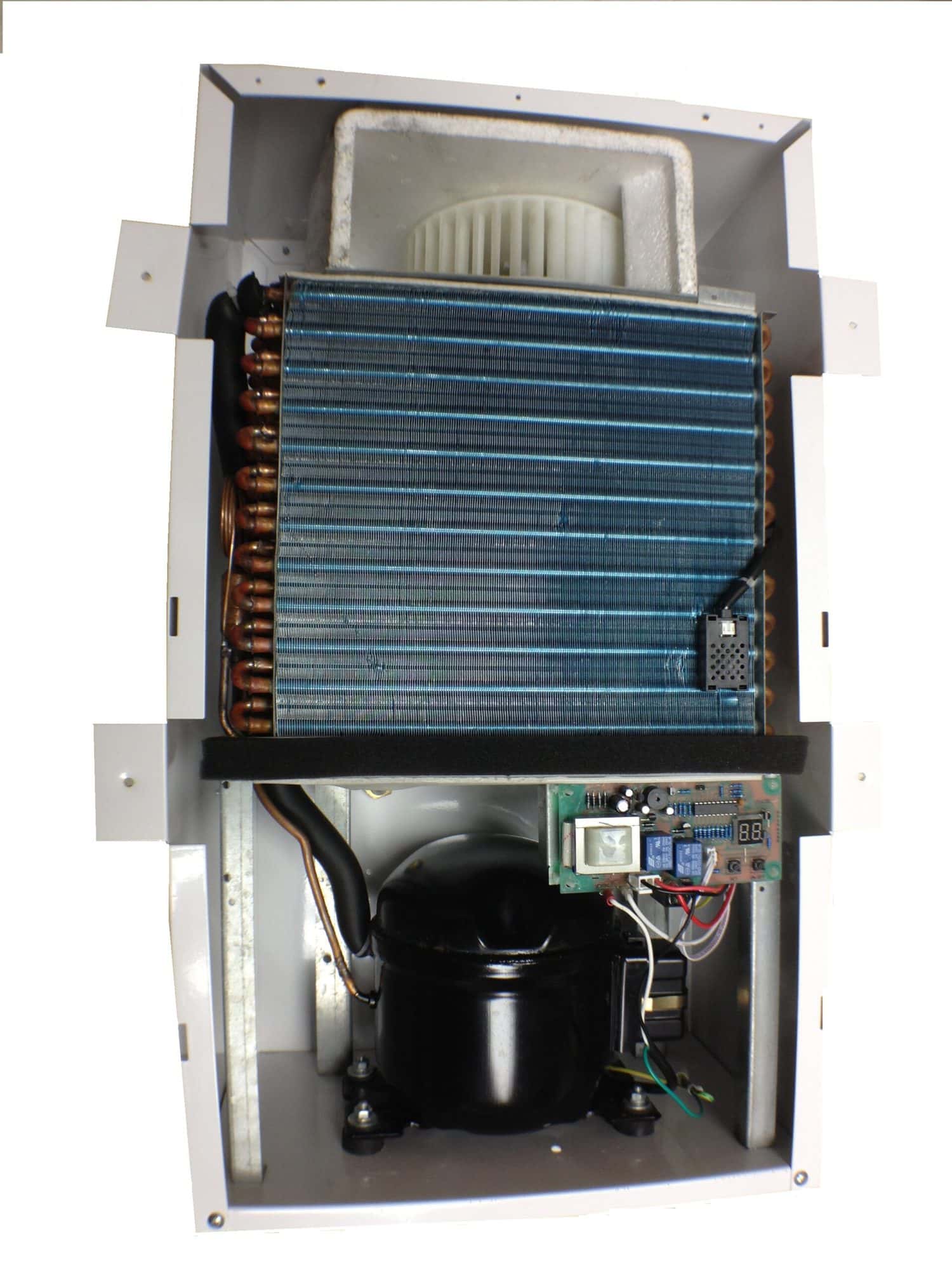


Photo credit: innovativedehumidifiers.com
Can I Recharge My Dehumidifier Myself?
In the old days, it was easier to recharge dehumidifiers. The coolants were available everywhere, and you could often find recharge kits.
However, today’s models contain dangerous chemicals, and HVAC companies offer the service to protect you and your home. It’s recommended that you take it to the manufacturer or a professional to charge the dehumidifier for you.
Safety Considerations When Recharging a Dehumidifier
If you’re still determined to recharge the dehumidifier yourself, here are some safety precautions you need to bear in mind.
Keep Away From Children



Since the contents are highly pressurized and contain chemicals, you must keep the dehumidifier and coolant away from children. They might think it’s a toy, which can lead to disastrous consequences. It’s especially dangerous if they hit or knock the filler.
Heat Resistance
The dehumidifier will become hot during recharging, so it’s best to place it on a heat-resistant surface. Furthermore, keep the unit open and uncovered to prevent overheating or damage. You’ll also be able to see how the coolant begins to work when the coils start kicking in.
Standing Upright
If you’re using a charging socket, ensure that it’s plugged in at the top to prevent a fire outbreak or other damage. You should also ensure that the dehumidifier and charger remain upright so that the chemicals can travel safely from one device to another.
Ventilation
People Also Ask
If you have any questions that you need instant answers for, we may just have the solution for you here below. Feel free to read through the FAQs we regularly receive from readers.
How Many Years Does a Dehumidifier Last?
It depends on the type you have, and whether it’s commercial, residential, or industrial. Most dehumidifiers can last up to ten years if looked after properly. However, that entails the correct maintenance and ensuring that you replace key components when they fail.
Is There Refrigerant in a Dehumidifier?
Yes, there is, also known as coolant. The refrigerant helps cool the humid air that enters, condensing it into a solid water state. The liquid collects in the bottom tray so that dry air returns to the environment.
Do Dehumidifiers Have Freon?
Old dehumidifiers that pre-date 1995 have Freon coolant. You still find these units available today, especially if they are well-maintained. You should refrain from using modern coolants with these machines, as you could blow a gasket.
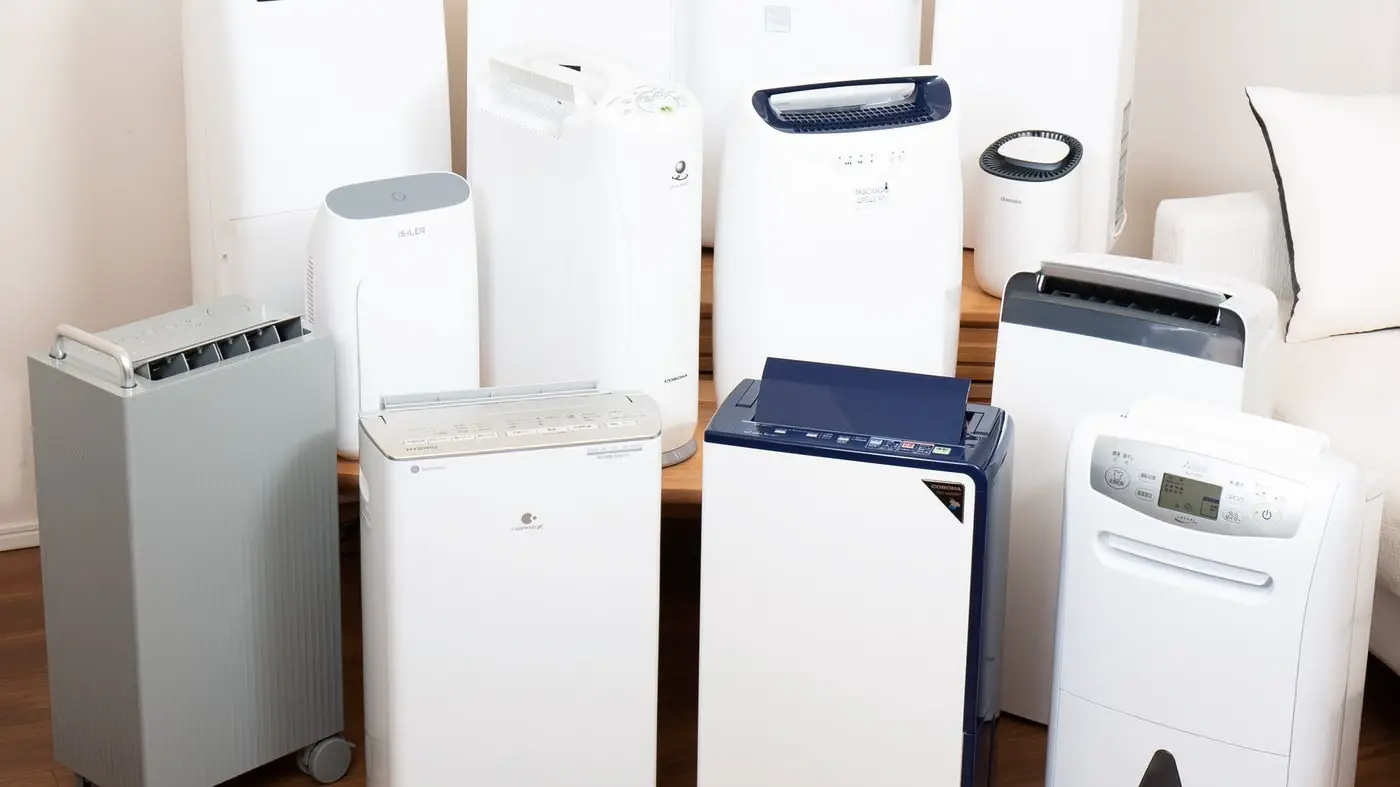


Photo credit: my-best.net
How To Tell If a Dehumidifier Needs Freon
You can tell if a dehumidifier needs coolant when the humidity levels don’t drop anymore. Also, take a look in the bucket to see if the water is collecting as it should. Finally, the machine’s control panel might also have an indicator letting you know when a recharge is needed.
How Much Does It Cost to Get a Dehumidifier Recharged?
It depends on the coolant and the dehumidifier size. In general, it can cost you between $80 and $140 per lb, while recharging the whole unit can be anywhere between $200 and $500. Make sure you calculate the operating cost analysis before you buy a dehumidifier.
How to Recharge Desiccant
Desiccant dehumidifiers have a silica gel that removes the air’s moisture when it passes through the material. The gel sits in a containment unit with color beads indicating when a charge is needed. You plug it into a socket for a few hours, drying it out so that it can absorb moisture again.
What If The Recharge Doesn’t Work?
Your dehumidifier or recharge kit may be faulty. Furthermore, there may be a different problem than you first identified. Check for any pipe leaks, fan or compressor damage, or take it to a professional to assess it.

